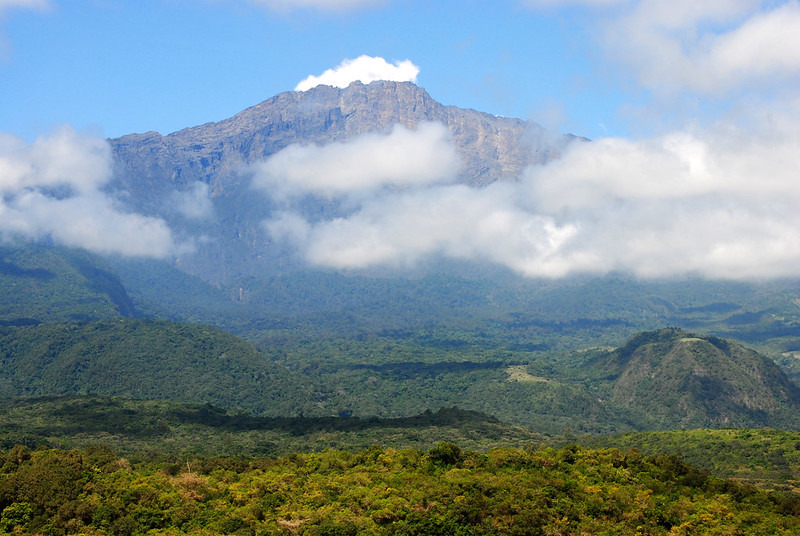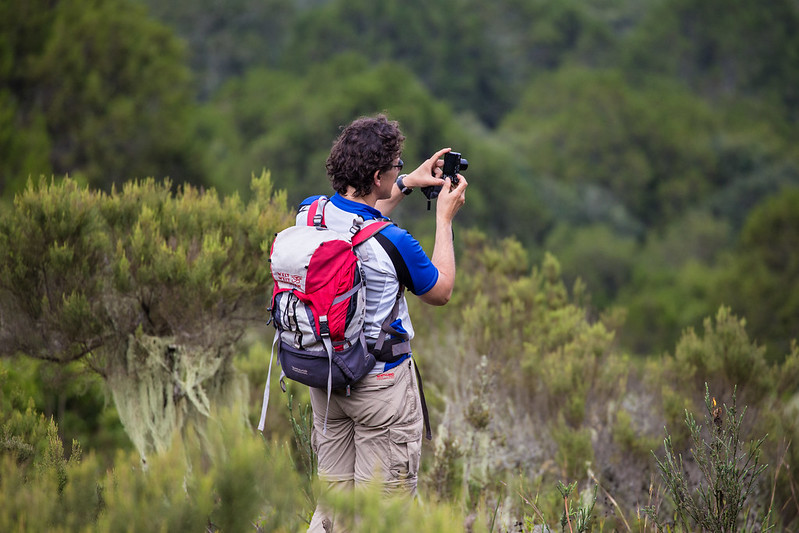Mount Meru, Tanzania
Mount Meru is a magnificent and impressive peak located in northern Tanzania. This dormant stratovolcano is situated within the vast Arusha National Park and ranks as the second-highest peak in Tanzania, as well as one of the tallest in Africa, following the renowned Mount Kilimanjaro in terms of mountaineering in Tanzania. Mount Meru is situated roughly 70 kilometers west of Kilimanjaro; although frequently eclipsed by its renowned counterpart, it possesses distinct allure and beauty.
The region adjacent to Mount Meru contains numerous rivers and streams that derive from the melting snow and glaciers at the peak. These waterways traverse the valleys, supporting the adjacent flora and fauna while serving as a vital resource for the native Chagga population. Mount Meru is located at the coordinates 3°14’48″S and 36°45’02″E. It prominently towers over the Arusha town skyline at an elevation of 4,566 meters (14,979 ft) above sea level. It is encircled by verdant tropical rainforests and constitutes a segment of the larger eastern branch of the East African Rift System, rendering it a geological wonder. Examine the Rwenzori Mountains
When contemplating a trekking expedition in Tanzania, one may be conflicted between selecting Mount Kilimanjaro or Mount Meru. Although Kilimanjaro frequently garners attention as Africa’s tallest mountain, Mount Meru provides a unique and enthralling experience that should not be overlooked.
Mount Kilimanjaro is famous for its difficulty, with treks spanning several days and requiring considerable physical stamina. Conversely, Mount Meru provides a marginally less arduous trekking experience. The ascent generally requires approximately 3-4 days, rendering it an optimal choice for anyone desiring a brief expedition or for novice hikers in high-altitude trekking. Determine the optimal time to ascend Mount Meru.

Scenic Beauty of Mount Meru
Both mountains offer stunning views, although Mount Meru possesses a distinctive allure due to its verdant rainforests, varied vegetation, and captivating fauna. The lower slopes of Mount Meru are covered in lush vegetation, presenting a scenic landscape adorned with ancient trees, ferns, and diverse wildflower species. Upon ascent, the terrain evolves into expansive moorland, revealing a marked contrast in the environment. The stunning allure of Mount Meru constitutes an ideal setting for photographers.
Wildlife Experience
A notable feature of Mount Meru is its rich biodiversity. The national park encircling the mountain hosts a diverse assortment of fauna, including giraffes, buffaloes, zebras, and warthogs. Additionally, Mount Meru is recognized for its population of monkeys, including the distinctive black and white colobus monkey. Observing these species in their native habitat enhances the thrill of the trekking experience.
Cultural Experience
Ascending Mount Meru provides an opportunity for cultural immersion. Arusha National Park, located close by, is inhabited by various indigenous tribes, including the Maasai and the Arusha. Engaging with the locals and acquiring knowledge about their traditions and lifestyle can enhance your experience and offer a profound comprehension of the region’s cultural history.
Cultural Experience Around Mount Meru
Mount Meru possesses profound historical and cultural importance, especially for the Chaga people residing in the area. For ages, the Chaga have venerated the mountain as a sacred location, perceiving it as the residence of their ancestors and the genesis of their culture. In Chaga mythology, Mount Meru is regarded as the center of the cosmos and a link between the terrestrial and the divine. The Chaga have the belief that the spirits of their ancestors inhabit the mountain, offering guidance, protection, and prosperity to the community. Meru Mountain is vital to Chaga rituals and celebrations.
Ascending the slopes of Mount Meru is thought to facilitate communication with ancestors and to obtain blessings for pivotal life events, including marriage, birth, and harvest. Moreover, Mount Meru has functioned as a navigational landmark for the Chaga people. Its unique silhouette and prominent placement have facilitated orienting and served as a cultural marker, leading the Chaga in their agricultural techniques and daily activities.

Mount Meru features a varied array of vegetation and fauna, rendering it a sanctuary for nature aficionados. The mountain’s many ecosystems sustain a remarkable variety of flora and fauna, resulting in a rich and dynamic ecological environment.
The lowest elevations of Mount Meru are embellished with lush tropical rainforests. Majestic trees like cedar, fig, and olive offer shade and refuge for several plant species. Ferns, orchids, and wildflowers embellish the forest floor, forming a vibrant array of colors. With increasing height, the forest transitions to moorland, distinguished by heather, enormous lobelias, and groundsel plants. The elevated areas of the mountain are defined by alpine desert, where only the most tenacious flora, such as mosses and lichens, can endure.
Mount Meru wildlife
Mount Meru abounds with biodiversity, presenting a distinctive opportunity to observe several species while navigating its slopes. The wooded lower slopes harbor colobus monkeys, blue monkeys, and a variety of avian species, notably the vibrant turacos. Upon ascending, one may find larger creatures including giraffes, buffaloes, and antelopes. The uncommon and elusive leopard inhabits the elevated areas of the mountain, though sightings are sporadic. Mount Meru offers an extraordinary display for ornithologists, with more than 400 avian species documented in the area.
Mount Meru Itinerary
Day 1: Momella Gate to Miriakamba Hut Elevation – 1500m to 2500m Duration: 3 – 4 hours
Habitat – Montane Forest
Day 2: Miriakamba Hut to Saddle Hut Elevation – 2500m to 3550m Duration: 3 – 4 hours
Habitat – Moorland
Day 3: Saddle Hut to Socialist Peak to Miriakamba Hut Elevation – 3550m to 4256m to 2500m
Duration: 8 to 10 hours
Habitat – Semi-desert, Alpine desert, Montane forest
Day 4 – Miriakamba Hut to Momella Gate Elevation – 2500m to 1500m
Duration: 2 to 3 hours
Habitat – Montane Forest
Mount Meru Accommodation
The Miriakamba Hut, situated at an elevation of 2,514 meters (8,250 feet), serves as the initial waypoint for trekkers en route to the summit of Mount Meru. This modest yet comfortable mountain lodge offers fundamental lodging and sanitation amenities. It serves as an optimal resting location following the first day’s climb and provides breathtaking vistas of the surrounding terrain.
The Saddle Hut, located at an altitude of 3,570 meters (11,713 feet), serves as the second overnight stop during the ascent. The hut is conveniently located between the lower slopes and the ascent to the summit. It offers trekkers a comfortable location to recuperate and rejuvenate prior to the arduous ascent.
The Momella Lodge provides a serene escape for individuals desiring a more opulent experience, situated near the entrance of Arusha National Park. This charming resort offers comfortable lodging with breathtaking vistas of Mount Meru. The verdant grounds and tranquil ambiance render it a perfect location for relaxation and rejuvenation prior to or following your excursion.
